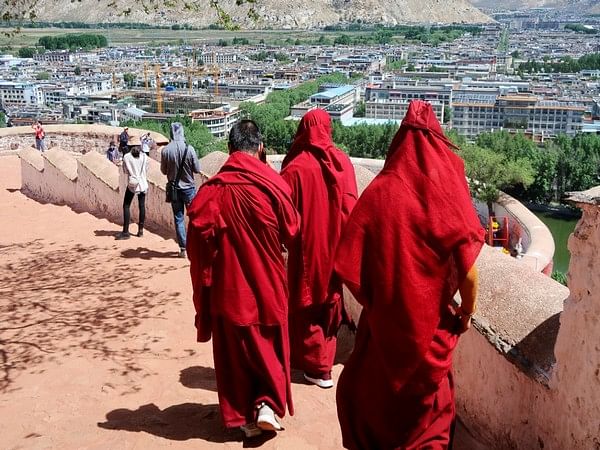Doklam is a junction point between India, China and Bhutan. It is not up to Bhutan alone to solve the problem,” the Bhutanese Prime Minister Lotay Tshering is reported to have said in an interview to a Belgian daily. China is eager to settle its border dispute with Bhutan though it does not suit Bhutan to do so. Officials from both countries held a meeting in January 2022 and agreed to “push forward” a three-step roadmap as an expert group meeting held boundary talks in the southwestern Chinese city of Kunming. A joint release said the two sides “had an in-depth exchange of views on implementing the MOU on the Three-Step Roadmap for Expediting the China-Bhutan Boundary Negotiations, and reached positive consensus.”
Bhutan and China have held 24 rounds of border talks beginning 1984. The 24th round appears to have come much closer to resolution, signalling the urgency on the part of China. The talks have focussed mainly on settling two areas – Doklam and other nearby ridges and valleys on the western border near the trijunction, and Jakarlung and Pasamlung valleys along Bhutan’s northern borders. Incidentally, there are reports that China has also laid claims to Sakteng Wildlife Sanctuary in eastern Bhutan. In June 2020, Bhutan sought an international grant for this sanctuary spread over some 750 square kilometres bordering Arunachal Pradesh. China, a member of the global institution, opposed the grant saying the sanctuary is a disputed territory. A terribly puzzled Bhutan held that Beijing never mentioned this in the last 36 years of border talks and strongly protested China’s mention of border disputes in ‘western, middle and eastern sections”.
While the area of Chinese claims on the northern side of Bhutan are much larger compared to Doklam, the strategic significance of Doklam is what makes it indispensable for Beijing. The Jakarlung and Pasamlung valleys along Bhutan’s northern borders with Tibet measure 495 sq. km. while the western areas, measuring 269 sq km, are of paramount importance to India, particularly after the 2017 stand-off at the India-Bhutan-Tibet (now China) trijunction.
Takeover of Tibet in 1951 gave China direct access to India, Nepal, and Bhutan and indirect land connection to Pakistan via Pakistan Occupied Kashmir (POK). Besides, since the 1962 aggression, China has retained control over about 14,000 square miles of land in Aksai Chin. The 1959 Tibet uprising, which hardly lasted for a fortnight, gave a handle to Beijing to tighten its stranglehold over Tibet and force The Dalai Lama to seek refuge in India. Between 1950 and 1957 China had built an all-weather road, G219, between Yecheng (Kargilik) in the Xinjiang Uyghur Autonomous Region and Lhatse in the Tibet Autonomous Region. The second phase of this road, G695, began sometime in 2010 and if uninterrupted, it will connect landlocked Xinjiang to Mong Cai (near Halong), a port city in Vietnam connected by the Yanbian Highway. This border gate city is located at the meeting point of Tonkin Gulf and the economic corridor of Nanning-Singapore making it an important connecting point for ASEAN-China economic cooperation and trade.
China’s border management
The next phase of border highway G695 is part of China’s border management and will pass through Kamba, 30 km north of Naku La in Sikkim. China has made no secret of its intentions in building border roads as “governing border areas is the key for governing a country and stabilising Tibet”, as Xi Jinping put it. As part of this plan, there are reports of heavy Chinese settlement along the proposed highway areas. Unconfirmed satellite images have revealed China built a village east of the Doklam plateau on the Bhutanese side. In fact, this is the same area that witnessed the over two month long standoff between India and China in 2017. This resulted in the Indian Army blocking the construction of a road by PLA from Doklam plateau to Jhamperi ridge. This road will give the PLA a vantage position to oversee the Siliguri Corridor, about 12 to 17 km (as the crow flies or a drone can fly) from Jhamperi ridge.
Doklam located on the tri-junction of Tibet-Bhutan-India border lies between Chumbi Valley in the north and Sikkim to the west adjoining Bhutan’s Haa Valley and Samtse District. Donkya Range separates Chumbi Valley from Sikkim. Doklam is of great strategic importance as it overlooks Siliguri Corridor, gateway to all of the seven Northeastern states, besides linking India with Tibet (China), Nepal, Bhutan, and Bangladesh.
Meanwhile, India should take up the proposed (almost 40 years back) “Tetulia Corridor” with Bangladesh seriously. This would join Assam with West Bengal and provide more land space to widen the narrow Siliguri Corridor, aptly referred to as Chicken Neck. Like the ‘Maitri Setu’ bridge built over the river Feni flowing between Tripura and Bangladesh, which connects Sabroom in Tripura with Ramgarh in Bangladesh, there needs to be a bridge or increased land connectivity between West Bengal and Bangladesh.
India-Bhutan relations have always been excellent and cordial with India contributing massively to Bhutan’s hydro-electric projects. The two economies, strategic equations and security needs are closely interlinked. Landlocked Bhutan is also a member of BIMSTEC as it heavily depends on the Bay of Bengal for its trade, imports and exports. New Delhi and Thimphu should hold meetings more often and coordinate better to avoid any unpleasant future shocks.
Seshadri Chari is the former editor of ‘Organiser’. He tweets @seshadrichari. Views are personal.
(Edited by Prashant)



